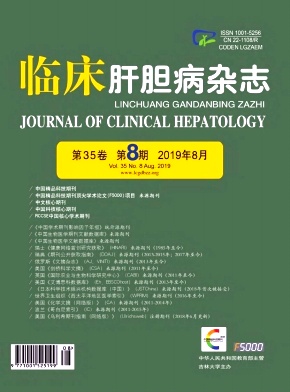|
[1] HUIBREGTSE K, KATON RM, TYTGAT G NJ. Precut papillotomy via fine-needle knife papillotome:A safe and effective technique[J]. Gastrointest Endosc, 1986, 32 (6) :403-405.
|
|
[2] TESTONI PA, MARIANI A, AABAKKEN L, et al. Papillary cannulation and sphincterotomy techniques at ERCP:European Society of Gastrointestinal Endoscopy (ESGE) Clinical Guideline[J]. Endoscopy, 2016, 48 (7) :657-683.
|
|
[3] LIAO WC, ANGSUWATCHARAKON P, ISAYAMA H, et al. International consensus recommendations for difficult biliary access[J]. Gastrointest Endosc, 2017, 85 (2) :295-304.
|
|
[4] MASCI E, MARIANI A, CURIONI S, et al. Risk factors for pancreatitis following endoscopic retrograde cholangiopancreatography:A meta-analysis[J]. Endoscopy, 2003, 35 (10) :830-834.
|
|
[5] FREEMAN ML, GUDA NM. ERCP cannulation:A review of reported techniques[J]. Gastrointest Endosc, 2005, 61 (1) :112-125.
|
|
[6] LIU JZ, REN Z, QIN WZ, et al. Clinical effect of endoscopic retrograde cholangiopancreatography for elderly patients with periampullary diverticula accompanied with choledocholithiasis[J]. Chin J Dig Surg, 2017, 16 (4) :380-384. (in Chinese) 刘靖正, 任重, 秦文政, 等.内镜逆行胰胆管造影取石治疗老龄壶腹周围憩室伴发胆总管结石病患者的临床疗效[J].中华消化外科杂志, 2017, 16 (4) :380-384.
|
|
[7] NAVANEETHAN U, KONJETI R, VENKATESH PG, et al. Early precut sphincterotomy and the risk of endoscopic retrograde cholangiopancreatography related complications:An updated meta-analysis[J]. World J Gastrointest Endosc, 2014, 6 (5) :200-208.
|
|
[8] BAI Y, LI F, WANG SL, et al. Chinese expert consensus on perioperative medications for endoscopic retrograde cholangiopancreatography (ERCP) [J]. J Dig Dis, 2019, 20 (3) :103-113.
|
|
[9] LI JW, ANG TL, KAM JW, et al. The learning curve for needle knife precut sphincterotomy revisited[J]. United European Gastroenterol J, 2017, 5 (8) :1116-1122.
|
|
[10] ZHOU PH, YAO LQ, GAO WD, et al. Application of needleknife in dififcult biliary cannulation for endoscopic retrograde cholangiopancreatography[J]. Chin J Dig Endosc, 2006, 23 (4) :284-286. (in Chinese) 周平红, 姚礼庆, 高卫东, 等.针形切开刀在内镜胆管造影困难插管中的应用[J].中华消化内镜杂志, 2006, 23 (4) :284-286.
|
|
[11] JIN YJ, JEONG S, LEE DH. Utility of needle-knife fistulotomy as an initial method of biliary cannulation to prevent post-ERCP pancreatitis in a highly selected at-risk group:A singlearm prospective feasibility study[J]. Gastrointest Endosc, 2016, 84 (5) :808-813.
|
|
[12] KATSINELOS P, CHATZIMAVROUDIS G, BELTSIS A, et al.Comparison of three types of precut technique to achieve common bile duct cannulation:A retrospective analysis of 274 cases[J]. Dig Dis Sci, 2012, 57 (12) :3286-3292.
|
|
[13] SUGIYAMA H, TSUYUGUCHI T, SAKAI Y, et al. Transpancreatic precut papillotomy versus double-guidewire technique in difficult biliary cannulation:Prospective randomized study[J]. Endoscopy, 2017, 50 (1) :33-39.
|
|
[14] MIAO L, LI QP, ZHU MH, et al. Endoscopic transpancreatic septotomy as a precutting technique for difficult bile duct cannulation[J]. World J Gastroenterol, 2015, 21 (13) :3978-3982.
|
|
[15] French comment on article Transpancreatic sphincterotomy has a higher cannulation success rate than needle-knife precut papillotomy-a meta-analysis[J]. Endoscopy, 2017, 49 (9) :931.
|
|
[16] SARITAS U, USTUNDAG Y, HARMANDAR F. Precut sphincterotomy:A reliable salvage for difficult biliary cannulation[J].World J Gastroenterol, 2013, 19 (1) :1-7.
|
|
[17] WEERTH A, de SEITZ U, ZHONG Y, et al. Primary precutting versus conventional over-the-wire sphincterotomy for bile duct access:A prospective randomized study[J]. Endoscopy, 2006, 38 (12) :1235-1240.
|
|
[18] LI CJ, CUI Y, HUANG YS, et al. The efficacy and safety of precut technique in difficult biliary cannulation[J]. Dig Dis Endosc, 2008, 2 (3) :19-23. (in Chinese) 李初俊, 崔毅, 黄颖思, 等. Precut技术在ERCP插管困难病例中的作用及安全性研究[J].中国消化内镜, 2008, 2 (3) :19-23.
|
|
[19] AKIRA H, YOSHIKO N, MASASHI K, et al. Effect of precut sphincterotomy on biliary cannulation based on the characteristics of the major duodenal papilla[J]. Clin Gastroenterol Hepatol, 2007, 5 (9) :1113-1118.
|
|
[20] YAMAUCHI H, KIDA M, IMAIZUMI H, et al. Innovations and techniques for balloon-enteroscopeassistedendoscopic retrograde cholangiopancreatographyin patients with altered gastrointestinal anatomy[J]. World J Gastroenterol, 2015, 21 (21) :6460-6469.
|
|
[21] WANG QR, ZHANG Y, MOU D, et al. Association between hematobilia and primary disease after therapeutic endoscopic retrograde cholangiopancreatography[J]. J Clin Hepatol, 2017, 33 (5) :896-898. (in Chinese) 王群茹, 张勇, 牟东, 等.治疗性经内镜逆行胰胆管造影术后胆道出血与原发疾病的关系[J].临床肝胆病杂志, 2017, 33 (5) :896-898.
|
|
[22] CHEN Q, JIN P, JI X, et al. Management of difficult or failed biliary access in initial ERCP:A review of current literature[J].Clin Res Hepatol Gastroenterol, 2018.[Epub ahead of print]
|
|
[23] NAOKI S, HIROSHI K, HIROYUKI I, et al. Early use of double-guidewire technique to facilitate selective bile duct cannulation:The multicenter randomized controlled EDUCATION trial[J]. Endoscopy, 2015, 47 (5) :421-429.
|
|
[24] VOIOSU T, VOIOSU A, BENGUS A, et al. Trainee involvement increases precut rates and delays access to the common bile duct without an increase in procedure-related adverse events:A brave new world of ERCP training?[J]. Rom J Intern Med, 2018, 56 (1) :55-61.
|
|
[25] MEHTA PP, SANAKA MR, PARSI MA, et al. Association of procedure length on outcomes and adverse events of endoscopic retrograde cholangiopancreatography[J]. Gastroenterol Rep (Oxf) , 2014, 2 (2) :140-144.
|
|
[26] SUNDARALINGAM P, MASSON P, BOURKE MJ, et al. Early precut sphincterotomy does not increase risk during endoscopic retrograde cholangiopancreatography in patients with difficult biliary access:A meta-analysis of randomized controlled trials[J]. Clin Gastroenterol Hepatol, 2015, 13 (10) :1722-1799, e2.
|
|
[27] SAITO H, KOGA T, SAKAGUCHI M, et al. Post-endoscopic retrograde cholangiopancreatography pancreatitis in patients with asymptomatic common bile duct stones[J]. J Gastroenterol Hepatol, 2019, 1 (1) :1126-1147.
|
|
[28] PIER ALBERTO T, ALBERTO M, ANTONELLA G, et al. Risk factors for post-ERCP pancreatitis in high-and low-volume centers and among expert and non-expert operators:A prospective multicenter study[J]. Am J Gastroenterol, 2010, 105 (8) :1753-1761.
|
|
[29] CENNAMO V, FUCCIO L, REPICI A, et al. Timing of precut procedure does not influence success rate and complications of ERCP procedure:A prospective randomized comparative study[J]. Gastrointest Endosc, 2009, 69 (3 Pt 1) :473-479.
|
|
[30] HAUSER G, MILOSEVIC M, STIMAC D, et al. Preventing post-endoscopic retrograde cholangiopancreatography pancreatitis:What can be done?[J]. World J Gastroenterol, 2015, 21 (4) :1069-1080.
|
|
[31] GARCA-CANO J, VIUELAS CHICANO M, DEL MORAL MARTNEZ M, et al. Pancreatic stent insertion after an unintentional guidewire cannulation of the pancreatic duct during ERCP[J]. Rev Esp Enferm Dig, 2018, 110 (7) :416-420.
|













 DownLoad:
DownLoad: